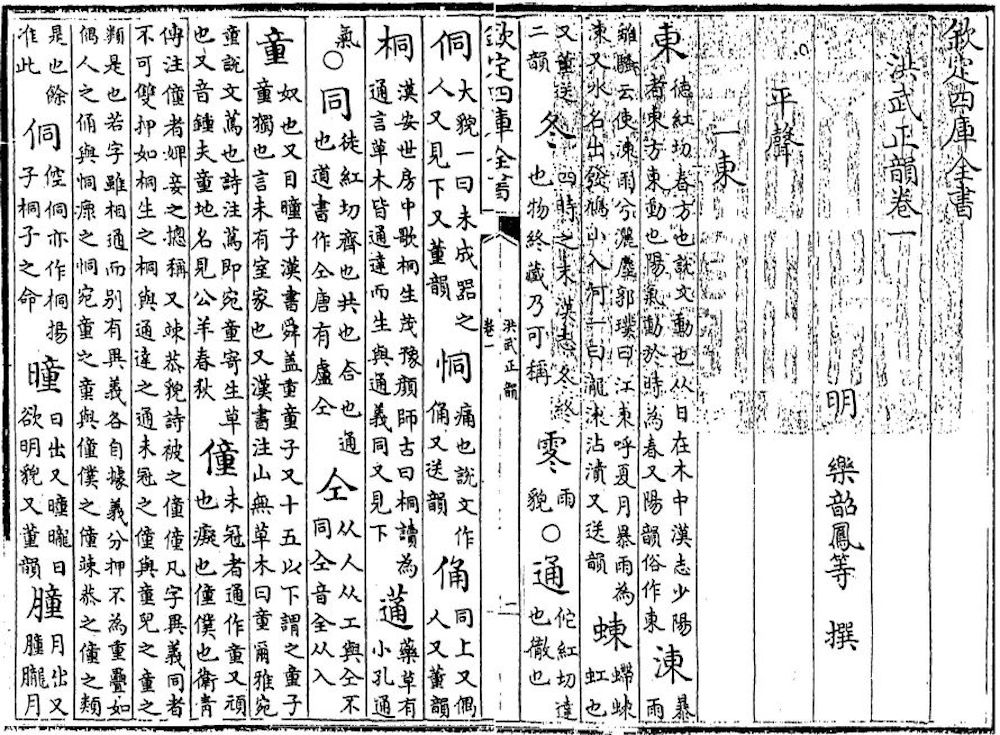Hongwu zhengyun 洪武正韻 "Correct rhymes from the Hongwu reign (1368-1398)" of the Ming period 明 (1368-1644), shortly called Zhengyun, is a dictionary with characters arranged phonetically according to a rhyme system. It was compiled on imperial order under the supervision of Le Shaofeng 樂韶鳳 (d. 1380) and Song Lian 宋濂 (1310-1381) and was finished in 1375.
The character dictionary is 16-juan long was was mainly written by persons from the southern China, thus contradicting somewhat Song Lian's statement in the preface that the rhymes are based on the pronunciations of the Central Plain, i. e. northern China. Song Lian criticized the rhyme system used in the older dictionary Libu yunlüe 禮部韻略 from the 11th century. Words with different rhymes were put in the same category, while some others were put apart but in fact belonging to the same rhyme group.
The modernized rhyme system of the Zhengyun comprised 22 raising (shangsheng 上聲), level (pingsheng 平聲) and falling tone rhymes (qusheng 去聲), and 10 entering rhymes (rusheng 入聲). The method to unify rhymes was not to simply subsume several older pronunciations under the same group, but each rhyme was separately checked and attributed to a new group. This method was the same as in the Yuan-period 元 (1279-1368) rhyme dictionary Zhongyuan yinyun 中原音韻, but the result was not the same.
A very critical point is the reintroduction of the entering tone, which was obsolete in the contemporary language of northern China, but was still kept on lexically because a lot of southern scholars were used to it in their home dialects. It might also be that in northern China, there was a difference between the vernacular language spoken in daily life, and the official language at the court. Many scholars were used to read literature aloud, so that this kind of recitation language retained some elements of antique pronunciation. The Zhengyun seems to be the more conservative of the two dictionaries.
 |
Siku quanshu 四庫全書 edition. |